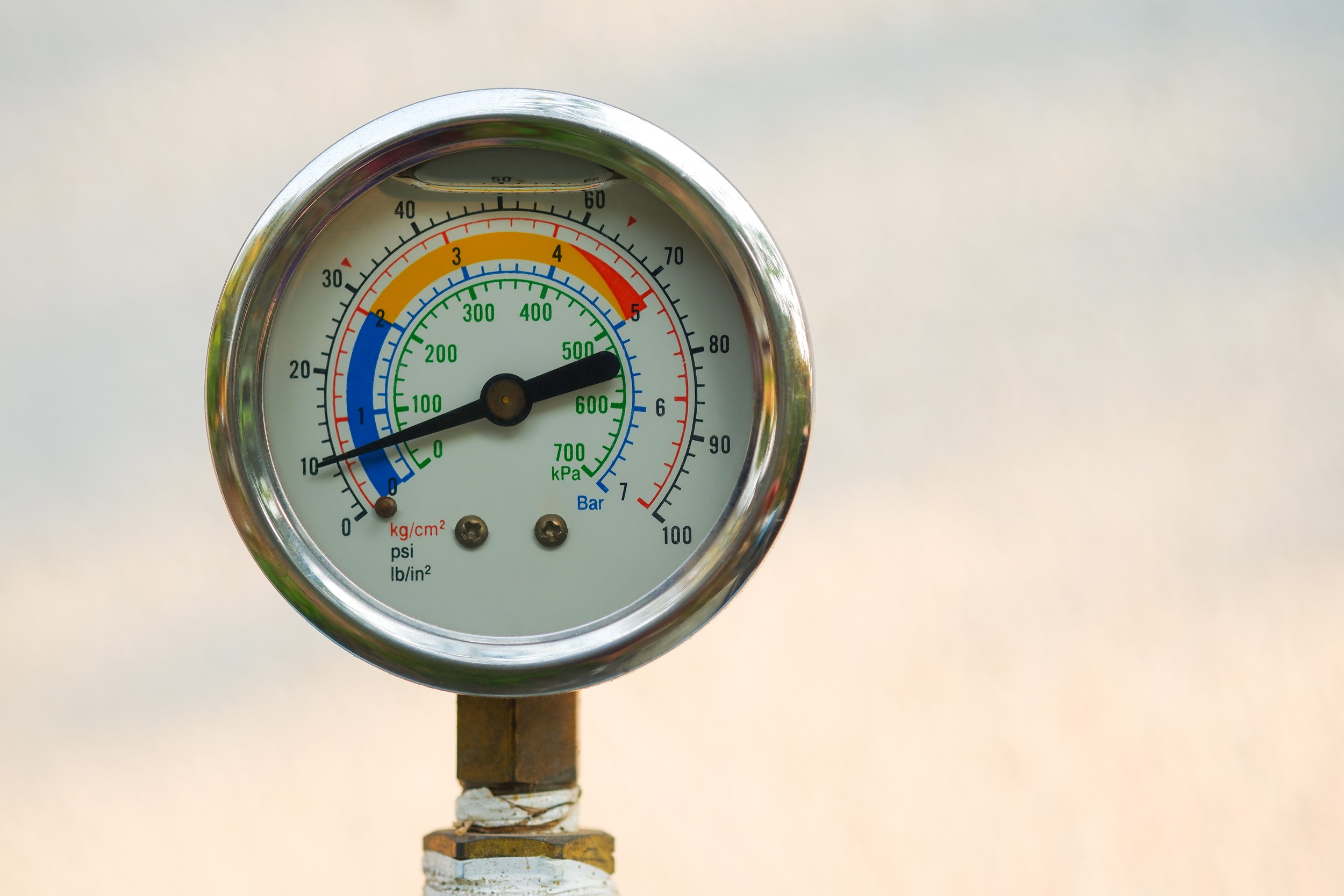Nothing is as frustrating as low water pressure when you need to take a quick shower before heading off to work.
Low water pressure problems manifest themselves in different ways. Quite frankly, they’re all frustrating. Examples include:
- Faucets taking a long time to fill a bathtub
- A weak spray from your showerhead
- Your dishwasher or washing machine taking much longer to run a cycle
So, what do you do when you experience these or other symptoms of low water pressure?
Determine the Cause of Your Low Pressure
 To fix low water problems, you must first determine the cause of your low water pressure.
To fix low water problems, you must first determine the cause of your low water pressure.
First, check if the water pressure issues are confined to only one fixture or whether they affect all your plumbing. If only one fixture is affected, it could be a blocked faucet or the pipes serving it.
If the water pressure issues affect the entire system, then you can use the following checklist to determine the cause of your problems:
Inspect Your Valves
Three valves could potentially affect your water pressure. You must give these a good inspection to determine if your low water pressure issues stem from them.
Pressure-Reducing Valve (PRV)
This is a valve that regulates the pressure in your pipes, keeping it at safe levels. It comes set from the factory at 50psi, but you can adjust the pressure up or down by turning the screw on top.
Water Meter Valve
Technically, this valve belongs to the water company and shouldn’t be meddled with, but, if you notice your low water problems after a plumbing repair, it could be that someone forgot to turn this valve on or turned it on partially.
Main House Shutoff Valve
This is another valve, usually located close to where the main supply line connects to your building’s plumbing. Like the water meter valve, it can sometimes be left partially open, leading to low water pressure.
These valves can also get damaged or worn out, so check for any damage or leaks around them.
Check for Leaks
Another way to determine the cause of your low water pressure is to check for leaks. A leaking toilet or pipe can have a big impact on your water pressure. You can also check your main service line for leaks. No matter how small the leak is, get it checked and rectified as soon as possible.
Evaluate Your Water Heater
If your low water pressure issues only affect your hot water, then it could be that your water heater could be the problem.
- Make sure the shutoff valve is fully open.
- Check for leaks in the tank.
- Flush your water heater tank as sediment build-up can cause blockages.
Check Your Pipes
Another common cause for low water pressure is corrosion in galvanized pipes. Because the corrosion is gradual, the water pressure drop is also gradual, making it hard to notice until it becomes unbearable.
How to Fix Low Water Pressure
Now that you know what could be causing your low water pressure woes, let’s get them sorted.
Repipe
If your pipes are galvanized, you’ll need to have them redone. Make sure to replace your old pipes with PEX, CPVC, or copper pipes.
Flush Your Water Heater
Regularly flush your water heater to reduce the build-up of sediments. Not only can they block the tank, but, if they make it out, they could block your pipes or faucets.
Install a Pressure Booster
If all else fails and you’re still experiencing low water pressure, you may want to install a pressure booster. As the name says, this is a device designed to help increase your building’s water pressure.
Consult with Professionals
To ensure you effectively sort out your plumbing problems, you must enlist the help of professionals. At KC’s 23 1/2 Hour Plumbing, we provide professional and affordable plumbing services. Not only do we provide 24/7 services, but we also don’t charge extra for overtime or after-hours service calls fees. So, anytime of day or night, give us a call at 760-327-8718.




